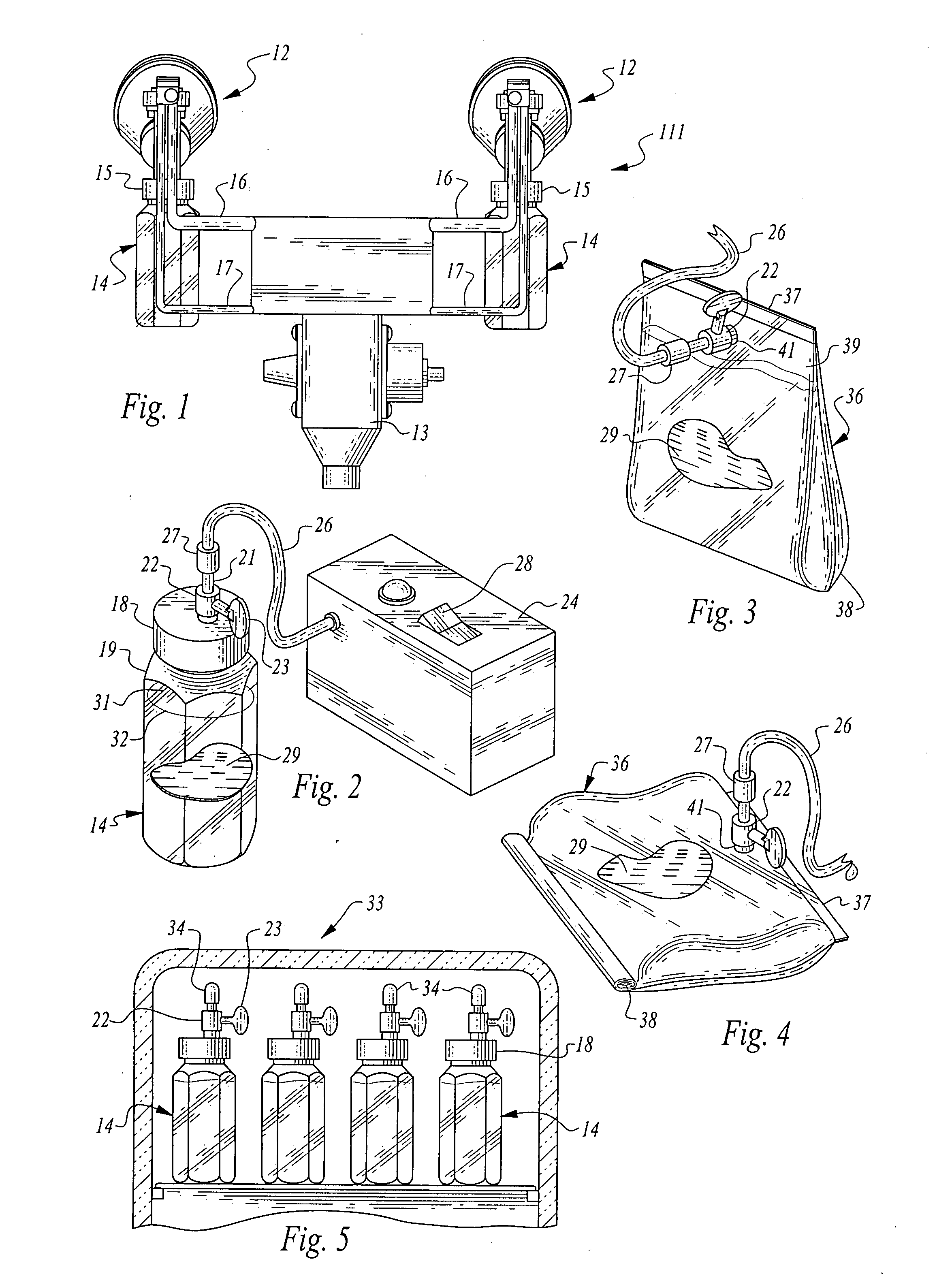Methods to store human breast milk
- Summary
- Abstract
- Description
- Claims
- Application Information
AI Technical Summary
Benefits of technology
Problems solved by technology
Method used
Image
Examples
Embodiment Construction
[0017]Turning now to the drawings, a prior art breast pump 11 for expressing human breast milk includes a pair of milk expressors 12 and a pump 13. Beneath each expressor 12 is a milk storage container 14, depicted in FIG. 1 as a rigid bottle preferably made from a transparent plastic material. Each storage container 14 has a threadably affixed removable cap 15, adapted to be coupled to a respective expressor 12. For the purpose of facilitating the expression of milk, vacuum lines 16 and air pressure lines 17 extend from the pump 13 to each expressor 12. The structure and operational features of breast pump 11 are explained more fully in U.S. Pat. No. 6,974,439, which is hereby incorporated by reference.
[0018]After a desired quantity of breast milk has been expressed into storage containers 14, the containers are removed from the breast pump 11. In one manner of carrying out the method of the present invention, each cap 15 is removed and replaced by a seal cap 18. Seal cap 18 is scr...
PUM
 Login to View More
Login to View More Abstract
Description
Claims
Application Information
 Login to View More
Login to View More - R&D
- Intellectual Property
- Life Sciences
- Materials
- Tech Scout
- Unparalleled Data Quality
- Higher Quality Content
- 60% Fewer Hallucinations
Browse by: Latest US Patents, China's latest patents, Technical Efficacy Thesaurus, Application Domain, Technology Topic, Popular Technical Reports.
© 2025 PatSnap. All rights reserved.Legal|Privacy policy|Modern Slavery Act Transparency Statement|Sitemap|About US| Contact US: help@patsnap.com


